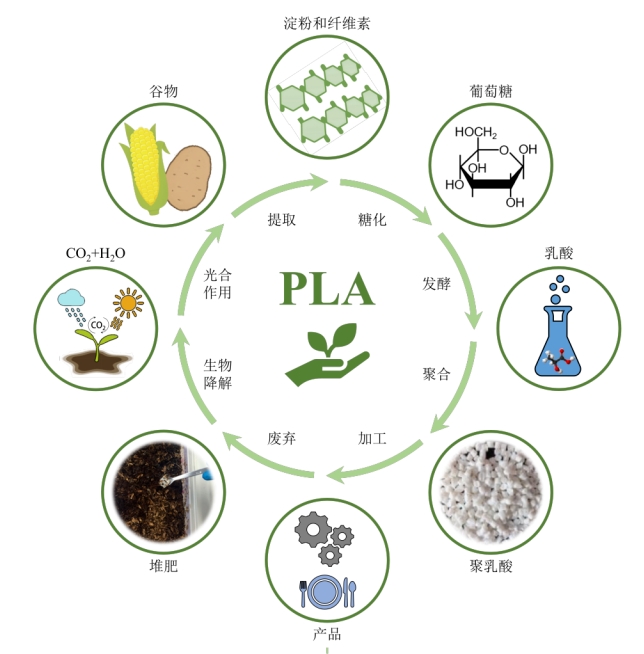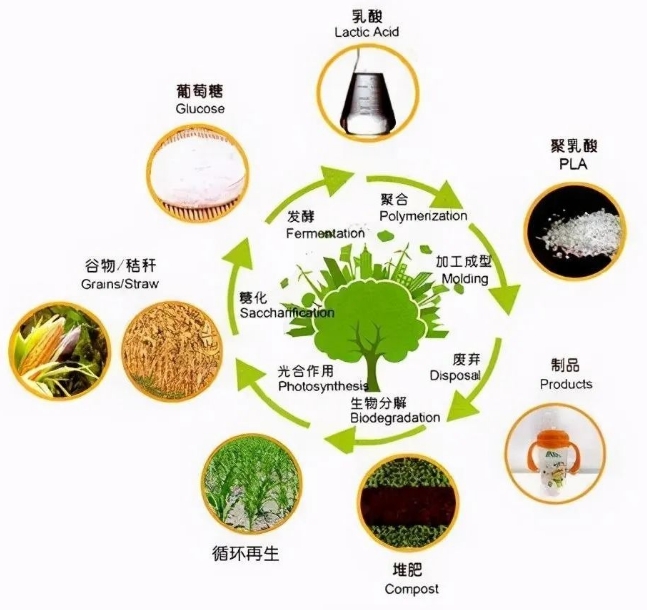
Mais
, una coltura umile, sta subendo una straordinaria trasformazione in laboratorio: gli scienziati stanno utilizzando il suo amido per creare un materiale magico che potrebbe sostituire la plastica tradizionale:
acido polilattico (PLA)
Questa bioplastica, essenzialmente "coltivata" nei campi, sta silenziosamente rimodellando il nostro rapporto con la plastica.

Processo di riciclaggio PLA
La nascita di
acido polilattico (PLA)
assomiglia a una staffetta coordinata con precisione: l'amido estratto dal mais viene prima scomposto in glucosio, poi fermentato dai batteri lattici per produrre monomeri di acido lattico. Questi monomeri vengono poi legati chimicamente in polimeri a catena lunga. Ci vogliono circa 2,5 chilogrammi di mais per produrre 1 chilogrammo di PLA, con emissioni di carbonio inferiori di circa il 60% rispetto a quelle delle plastiche tradizionali. Ciò che è ancora più notevole è che i prodotti in PLA usati, in condizioni di compostaggio industriale, possono essere "digeriti" dai microrganismi, trasformandosi nuovamente in anidride carbonica e acqua, completando un ciclo naturale.
Grafico del ciclo ecologico PLA
L'acido polilattico (PLA) brilla nel
campo medico
: le suture assorbibili realizzate in PLA scompaiono naturalmente una volta guarita la ferita, mentre gli impianti ortopedici si degradano gradualmente man mano che l'osso si rigenera.
stampa 3D
Anche gli appassionati lo adorano: una volta riscaldato, è morbido come un impasto; una volta raffreddato, si solidifica e diventa duro come la pietra. Oggi, il PLA è l'inchiostro "verde" scelto dal 35% delle stampanti 3D desktop in tutto il mondo.


